
When your offers fall flat (and it’s not because of price)
You’ve probably had this moment. You spend days refining your website, your landing page, or your newest digital product. You write the copy, test the checkout, and share it with excitement. Then… nothing happens.
The clicks are low. The conversions are worse. People seem interested, but few follow through. You start wondering if the market is saturated, if your price is wrong, or if maybe you just don’t have what it takes to sell.
But the truth is simpler: most offers fail not because they’re bad but because they’re invisible.
Your audience doesn’t see the real value, or they don’t connect emotionally. They’re scrolling fast, distracted, comparing, second-guessing. And when they can’t instantly tell why your offer matters to them, they move on.
Creating an irresistible offer isn’t about adding more bonuses or cutting your price. It’s about making your value impossible to misunderstand. It’s about clarity, emotion, and ease the same ingredients behind every magnetic brand and every confident creator.
Let’s unpack how to build an offer people feel compelled to say yes to.
What we’ll cover
- Why most offers get ignored
- Clarity over creativity: make it obvious
- Emotional triggers that drive decisions
- Positioning your offer as a natural solution
- Building visible value (and showing the math)
- Removing friction so buying feels easy
- Real urgency and why it matters
- The quiet power of price confidence
Turning your offer into a story they want to join

1. Why most offers get ignored
It’s frustrating when you create something you know is valuable and no one seems to care. The mistake isn’t in your work, it’s usually in how it’s framed.
Why this happens
You’re too close to your offer. You know how it helps, but your audience doesn’t. They only see another thing in their feed, another “service,” another “course.” Without clear context, your offer blends into background noise.
What this costs you
If you sell a $200 program and expect a modest 10 percent conversion rate, you’d make $2,000 from 100 visitors. But if unclear messaging drops that to 3 percent, you earn only $600. That’s a $1,400 loss caused not by quality but by communication.
How to fix this
- Start with your audience’s pain point, not your process.
- Strip your pitch down to one sentence anyone could repeat.
- Ask three people outside your niche to read your offer. If they hesitate to explain it back, simplify it again.
Example: A productivity coach once promoted her “Focus Optimization Framework.” It sounded professional, but confusing. When she changed it to “Finish your weekly goals in half the time,” her email open rates doubled and her sessions filled within a week.
Key takeaway: People can’t say yes to what they don’t understand.
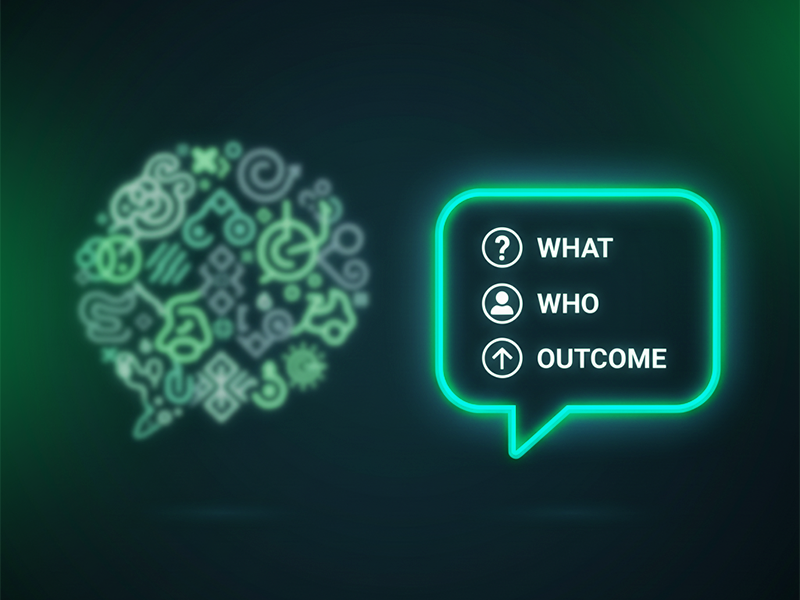
2. Clarity over creativity: make it obvious
You might think creative language will make your offer stand out. But clarity always wins. Clever taglines, abstract visuals, and mysterious slogans only work when your brand is already known. If you’re building trust, you need simplicity.
Why clarity sells
Your audience is busy. They don’t have time to decode metaphors. They want to instantly understand three things:
- What is this?
- Who is it for?
- What happens if I say yes?
When those answers appear fast, you earn attention.
How to test your clarity
- Say your offer out loud as if you’re telling a friend.
- If it sounds like something they’d respond to with “Oh, that’s cool,” you’re on track.
- If they ask “Wait, what does that mean?”, it’s time to rewrite.
Real example
A designer named Clara sold “brand ecosystem kits” on Gumroad. Her sales were flat. She changed her description to “ready-to-use Canva templates to make your next client project faster.” In two weeks, her sales tripled.
Key takeaway: Clear doesn’t mean dull, it means understandable.
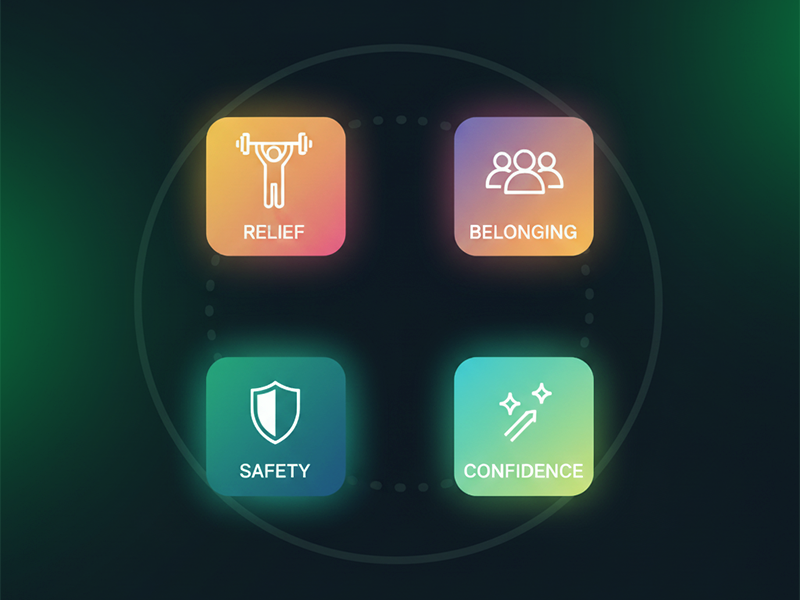
3. Emotional triggers that drive decisions
People buy emotionally and justify logically. The stronger the emotional connection, the easier the decision.
Why this matters
If you only list features or outcomes, you’re missing the moment when people feel why they need your offer. Emotion moves attention. Logic only confirms it.
Core emotional triggers
- Relief: The sense that a weight is lifted (“Finally, I can stop second-guessing my business strategy.”)
- Belonging: The reassurance of being part of a community (“Other creators like me use this.”)
- Confidence: The feeling of growth or mastery (“This will help me finally show up consistently.”)
- Safety: The assurance of not wasting money or time.
What to do instead
Start your message with emotion, not explanation.
If you sell a course, don’t lead with “Learn email marketing.” Try “Imagine sending emails that people can’t wait to open.”
Real example
A coach named Jamal offered “performance accountability sessions.” His bookings were slow. When he reframed it as “45 minutes to stop procrastinating on what matters most,” his bookings nearly tripled within a month.
Key takeaway: People remember how your offer made them feel more than what it contained.
4. Positioning your offer as a natural solution
An irresistible offer doesn’t feel like a pitch. It feels like a logical next step.
Why positioning matters
When you talk about what you do in isolation, it sounds like noise. But when you describe your offer as the bridge between where someone is and where they want to be, it feels relevant.
How to reframe your positioning
- Start with their problem: What are they struggling with right now?
- Show the bridge: Your offer is how they cross it.
- End with their outcome: Paint a picture of what life looks like after.
Example
A copywriter changed her tagline from “Conversion copywriting for coaches” to “Stop guessing what to say start booking clients with words that work.” Her leads rose by 60 percent in 30 days.
Key takeaway: You’re not selling your service. You’re selling the relief and clarity that come after.
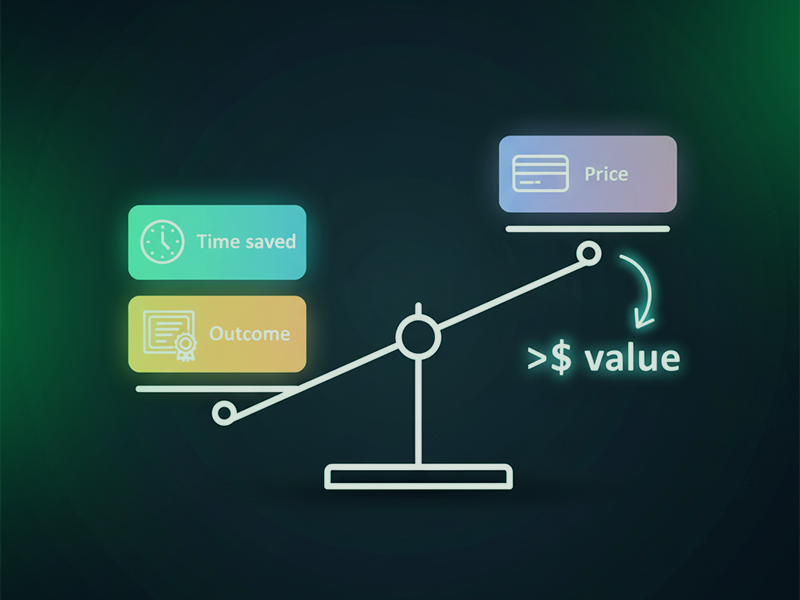
5. Building visible value (and showing the math)
Value is not what you include but it’s what people perceive. The moment someone thinks “this is worth more than what I’ll pay,” the decision becomes easy.
Why perceived value matters
Even if your offer is strong, buyers still perform an invisible equation:
Perceived Gain – Perceived Cost = Decision to Buy
If your gain is vague, they hesitate. If it’s vivid, they move fast.
How to show value clearly
- Break down what’s included and how it helps.
- Use simple comparisons (“Hiring a designer for this would cost $800, but you can get these templates for $79.”)
- Add time savings and emotional benefit (“You’ll save 10 hours a week and feel in control again.”)
Real cost example
Let’s say you sell a $300 session. If your client gains 10 hours back each month and earns $100 per hour, they’ve created $1,000 of value. That’s a 233 percent return right away.
Real example
Dana, a Notion consultant, sold workspace templates for $150. She added a short video walkthrough and lifetime updates, reframing it as “everything you need to manage your freelance business in one place.” Her conversion rate tripled.
Key takeaway: Don’t tell people your price but show them the trade they’re making in their favor.
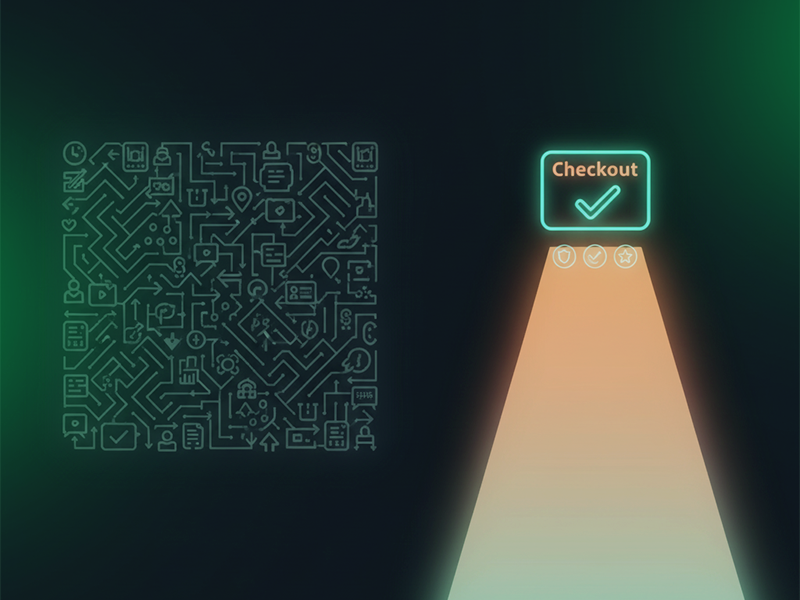
6. Removing friction so buying feels easy
Even when people want what you offer, friction can stop them. Friction is anything that makes saying yes harder than it needs to be.
Where friction hides
- Complicated checkout steps
- Missing trust signals (no testimonials or payment icons)
- Confusing refund policies
- Long, multi-step booking forms
Every extra click or unanswered doubt reduces momentum.
How to fix this
- Simplify the path: One clear call to action. One page. One checkout.
- Answer objections early: Add a short FAQ (“What if I don’t like it?” “How soon will I get access?”).
- Show safety cues: Use trusted payment tools like Stripe or Gumroad.
Real example
A course creator named Leigh sent potential buyers to a Google Form before checkout. Only 22 percent completed it. When she replaced it with a one-click Stripe checkout, completion jumped to 67 percent that week.
Key takeaway: Every second you save your buyer increases their trust in you.

7. Real urgency and why it matters
You’ve seen countdown timers that reset the next day. They may trick a few buyers, but they destroy long-term trust. Real urgency feels human, not manipulative.
Why fake scarcity backfires
When people sense artificial pressure, they resist. They assume your business depends on tricks rather than value.
How to create real urgency
- Limit your spots because your time is finite (“I take five clients each month.”)
- Add date-based bonuses (“Enroll before Friday to join the live kickoff.”)
- Highlight opportunity cost (“Every week you wait, your audience stays confused.”)
Real example
Ravi, a consultant, offered “10 VIP brand audits per month.” It was an honest limit and he had no capacity for more. Because of that, his audits sold out within two days every month for half a year.
Key takeaway: Urgency should protect your energy, not manipulate your audience.

8. The quiet power of price confidence
Pricing is psychological. Your confidence in your price signals your confidence in your work.
Why underpricing hurts
Low prices can attract buyers who hesitate or demand extra. Confident pricing attracts people ready to commit. It also positions your brand as credible and capable.
How to build price confidence
- Anchor with value: If your service saves someone ten hours, assign a dollar amount to that.
- Show the comparison: “This process normally costs $1,000 to implement manually. You’ll get it done for $299.”
- Avoid apologetic language: Don’t say, “I know this might seem expensive.” Say, “This is for people ready to take action.”
Real example
Margo, a podcast editor, charged $200 per episode and felt stuck. She repositioned her offer as “done-for-you podcast production that grows your authority,” raised her rate to $450, and kept all her clients. In three months, she doubled her revenue and cut her workload by a third.
Key takeaway: The market follows your belief. If you treat your work like it’s premium, others will too.
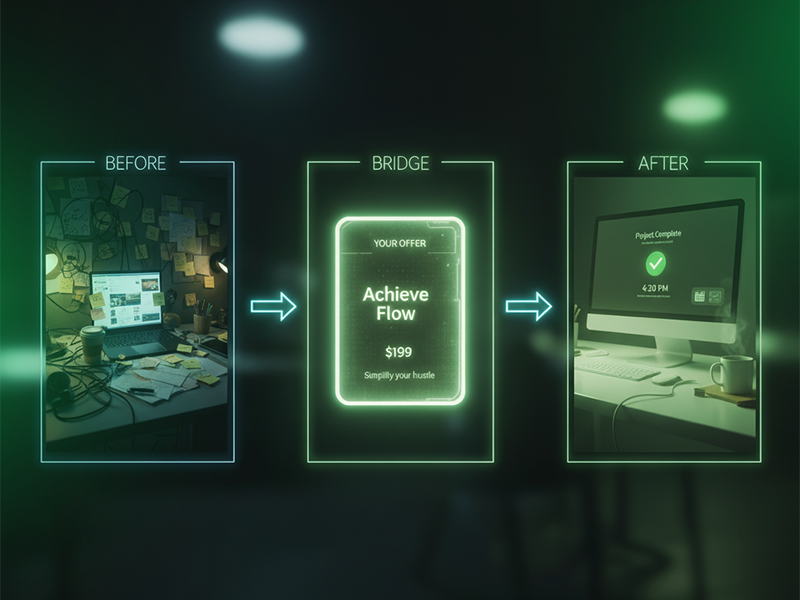
9. Turning your offer into a story they want to join
The most magnetic offers feel like invitations to a story. They make people imagine themselves in a better version of their lives.
Why stories work
Stories turn logic into emotion. They show transformation in motion. Instead of talking about what’s inside your product, show what life looks like after using it.
How to tell your offer story
- Define the before: What problem is your audience facing now?
- Describe the bridge: Your offer is the vehicle that gets them across.
- Paint the after: What changes once they’ve succeeded?
Example transformation
Before: A small business owner spends late nights managing projects in scattered Google Sheets.
After: They open their Notion dashboard, see every task in one place, and finally log off before dinner.
Real example
Priya, a content strategist, renamed her workshop from “Build your content plan” to “Wake up every Monday knowing exactly what to post.” Her signups tripled.
Key takeaway: People don’t buy features, they buy the future they can picture.
Bringing it all together
When your offer isn’t converting, it’s rarely a traffic problem. It’s usually a clarity problem. You’ve now seen how to fix it:
- Speak your audience’s language
- Lead with emotion, not explanation
- Frame your offer as the bridge, not the destination
- Show the math behind your value
- Remove every point of friction
- Create urgency with integrity
- Price with confidence
- Tell a story your audience wants to be part of
When all of these align, your offer stops feeling like a sales pitch. It becomes a moment of recognition—your audience sees it and thinks, This is what I’ve been looking for.
A simpler path forward
Making an irresistible offer isn’t about working harder. It’s about communicating better. Once your message is clear, your audience meets you halfway.
And if you want an easier way to organize, test, and refine your offers without juggling endless docs and notes, take a look at Briefee. It’s built for independent professionals and creators who want their ideas to sell naturally—without complex tools or burnout.
Because crafting an irresistible offer should feel simple, human, and yours.
2025 © Briefee. All Rights Reserved.
